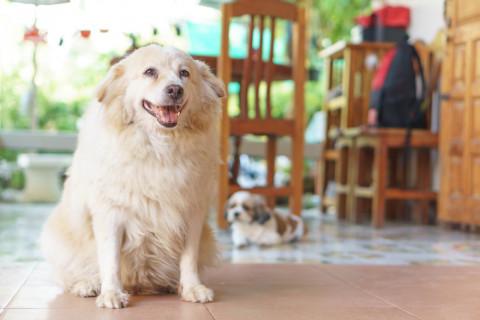Indice
Dogs and humans share more health problems than meets the eye, ranging from visual disorders such as glaucoma and cataracts, to digestive, cardiac and muscular conditions, among many others. Overweight and obesity is another common enemy that is gaining ground in the life of dogs, being now one of the main problems for canine health.
Early prevention and treatment of overweight in the furry ones at home is essential to prevent them from developing serious diseases that can shorten their lives, including obesity, diabetes, cardiac and respiratory deficiencies, along with kidney and liver complications. But in order to know how to proceed properly, you must first be familiar with how to care for an overweight dog.
How to tell when a dog is overweight and common causes
As in the case of humans, the main causes are an inadequate diet for the animal and lack of physical activity. In some cases, the dog may have metabolic problems that lead it to become overweight despite proper nutrition and exercise.
When feeding dogs, food with excess calories, added to extra snacks and leftover human food, almost certainly establishes the future presence of overweight in the animal, especially if the animal does not have enough play and exercise sessions.
To know when a dog is overweight, Seeing a veterinarian is the best option, as they can evaluate the dog’s Body Condition Score (BCS) and analyze its medical conditions. However, overweight can also be detected at home using palpation, observation and comparison with the ideal weight that each breed should be.
The most effective method is to observe the area where the ribs are located, if they are not visible at first, proceed to palpate the area to feel them. If the ribs are not visible but you can feel them by touch, then the dog is fine; but if they are not visible and you cannot feel them either, the animal is overweight.
Care for an overweight dog
The care for an overweight dog may vary slightly depending on your physical characteristics and lifestyle, but diet and exercise are the determining factors to counteract it. Both elements must go hand in hand to ensure success, and along with it, perseverance and routine will be the best allies.
In feeding it is necessary to know the nutritional requirements of the dog and prepare its food based on this, keeping a strong control over the number of calories consumed. The number of treats given as a reward should also be controlled, giving them only for specific and special occasions.
The amount of food to be fed will depend on the ideal weight of the dog according to its size and breed, as well as its daily exercise levels. Adult dogs should preferably eat twice a day, while puppies should eat three times a day.
The exercises for overweight dogs should include daily walks and play sessions, always adapting to the dog’s current abilities and without overstressing him. During the day there should be several play sessions ranging from 10 to 20 minutes, while walks and jogging should exceed half an hour; two to three sessions per day is considered ideal.
It is important to emphasize that this process takes time, especially if the dog has almost reached the limit of obesity. Consistency and routine are fundamental.
Image courtesy of (www.vets-now.com), all rights reserved.








